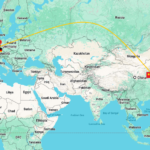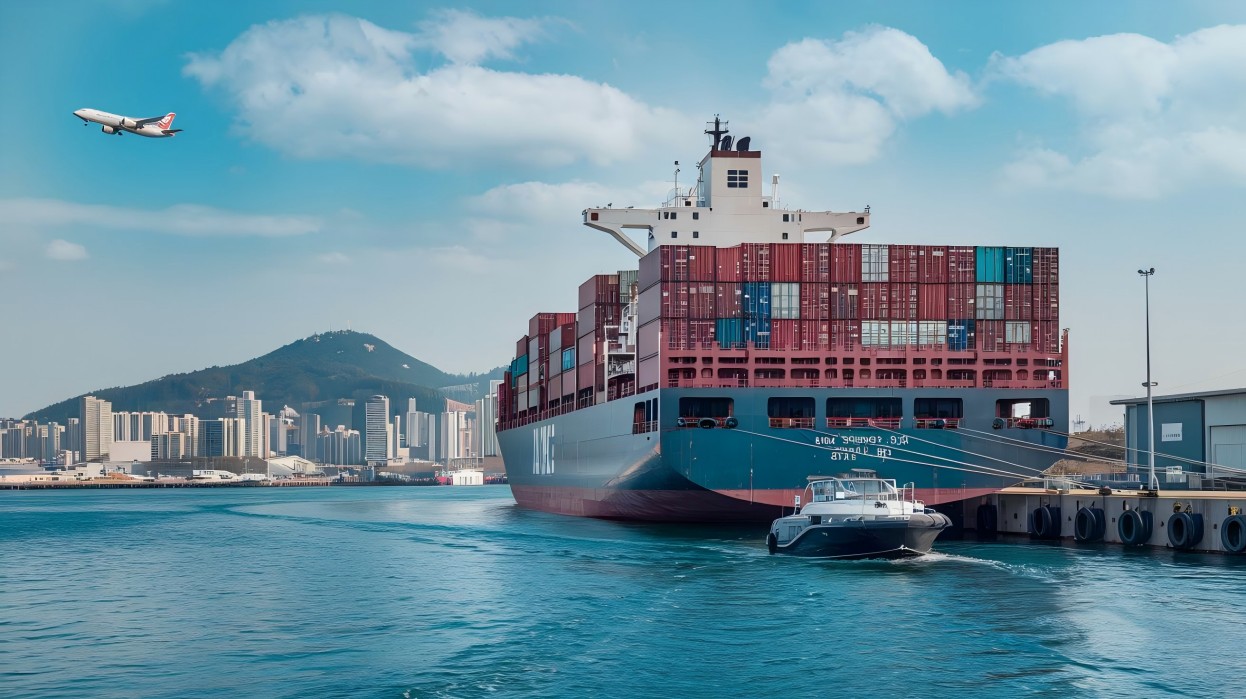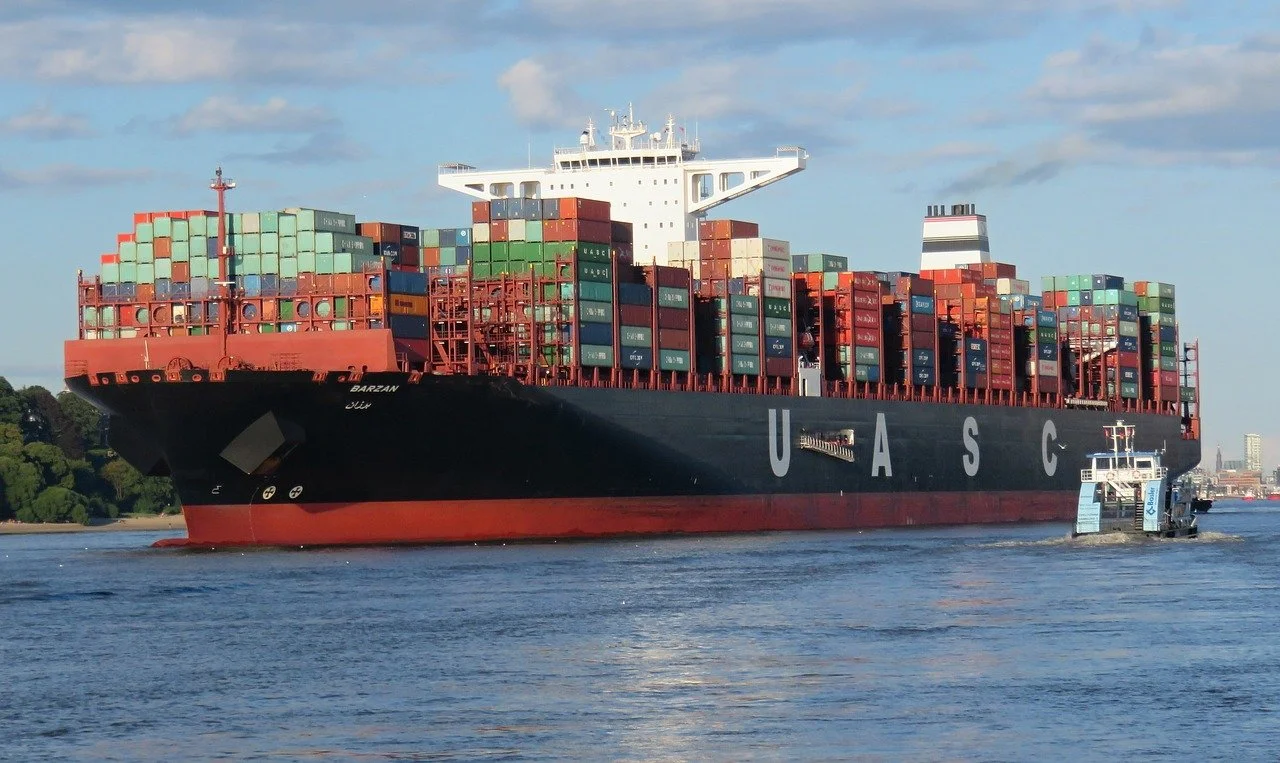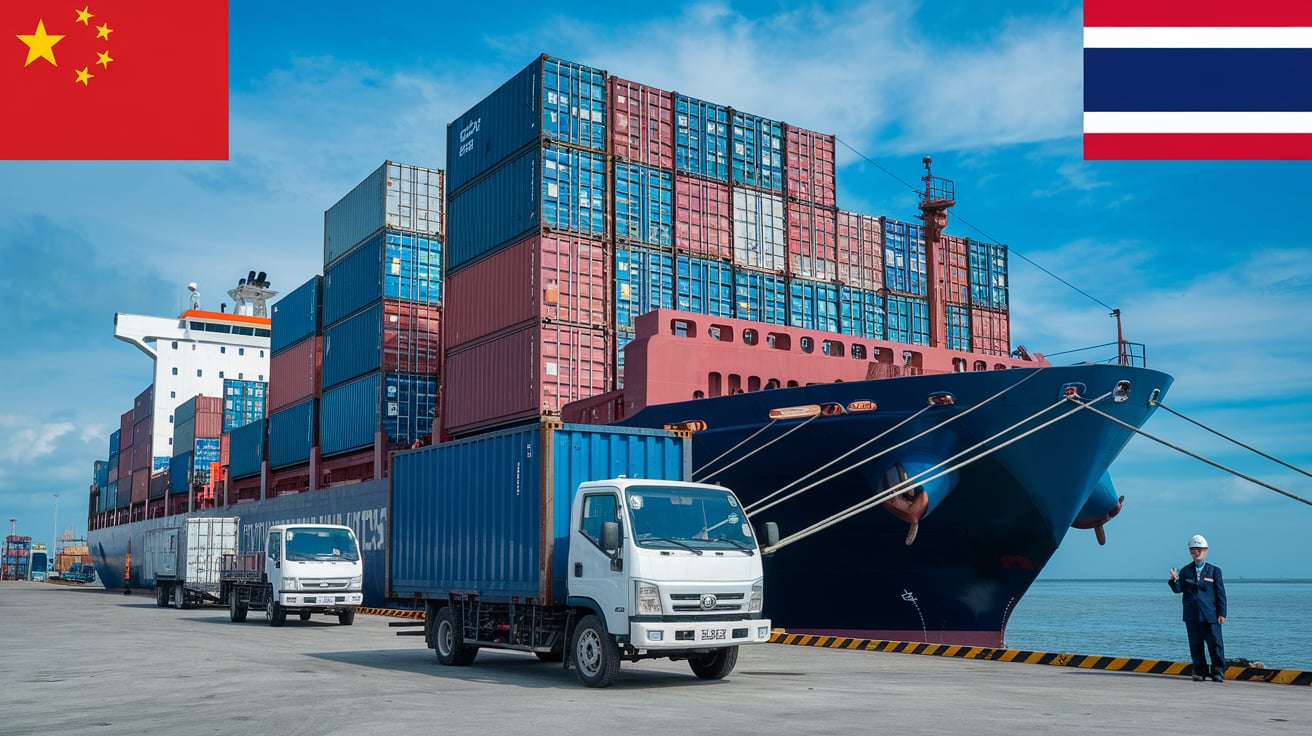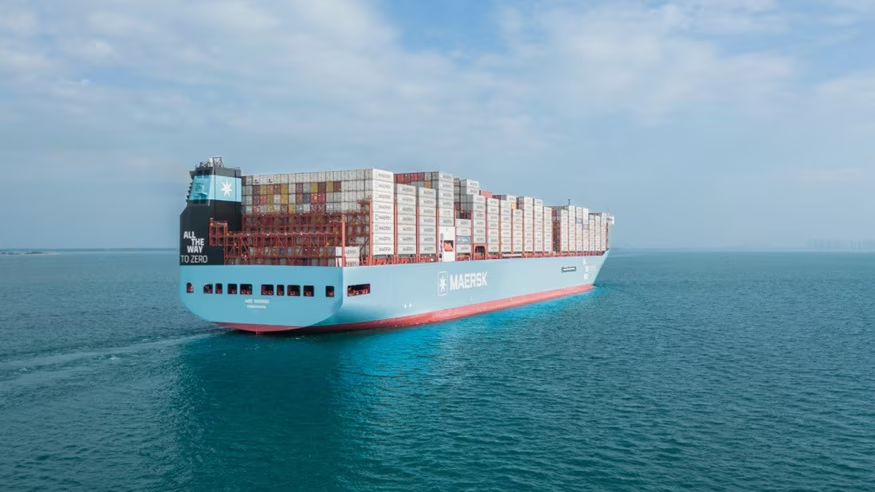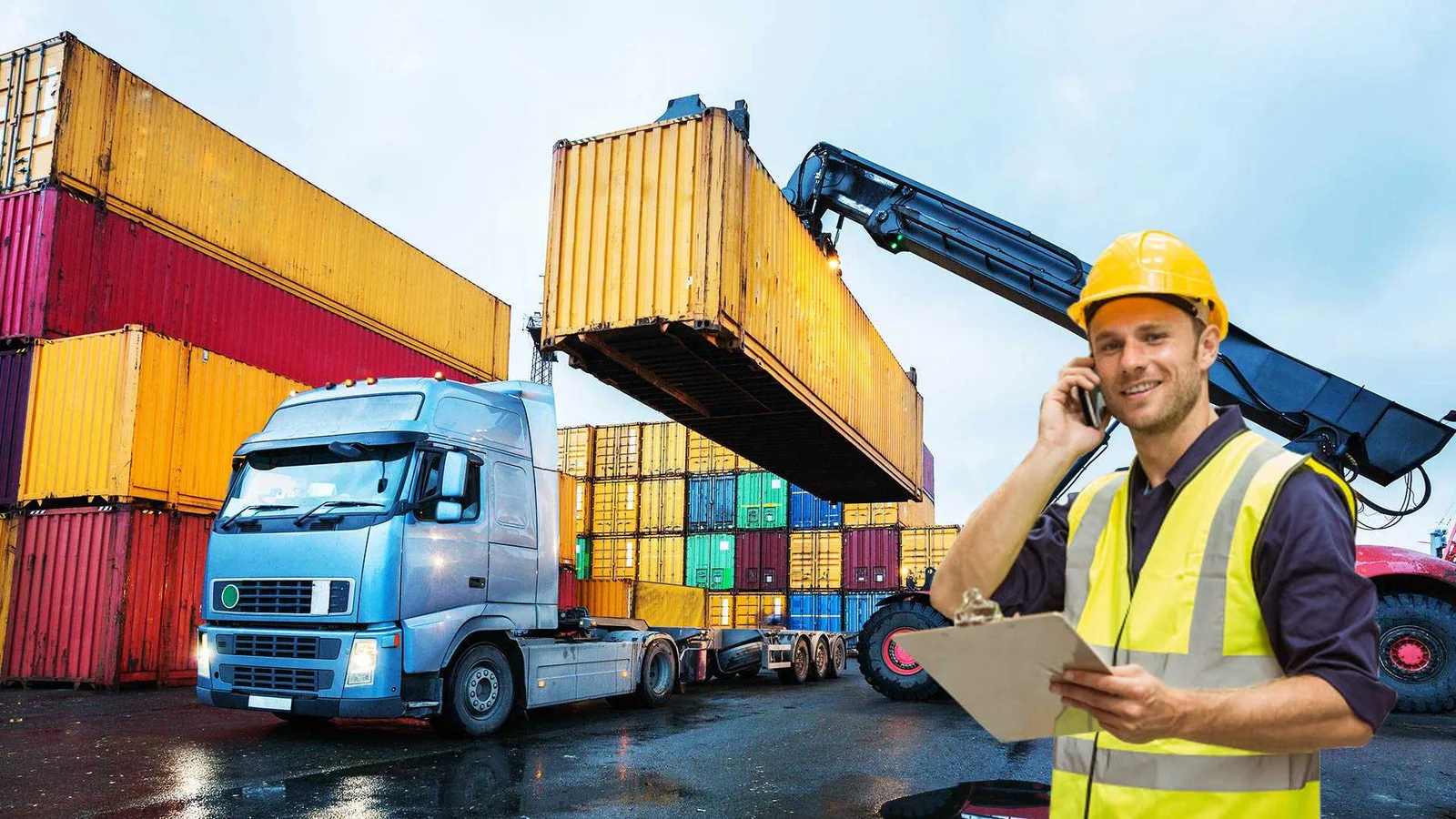In today’s global marketplace, sea freight has emerged as a pivotal component of international trade, particularly between China and Kuwait. With China’s status as a leading manufacturing hub and Kuwait’s growing demand for diverse goods, understanding the intricacies of sea freight is essential for businesses seeking to import products efficiently and cost-effectively. This guide delves into the various sea freight options, highlighting the benefits of Less than Container Load (LCL) and Full Container Load (FCL) shipping methods, along with essential considerations such as costs, transit times, and customs clearance processes. By equipping importers with vital knowledge and insights into the shipping landscape, we aim to facilitate smoother and more successful logistics operations.
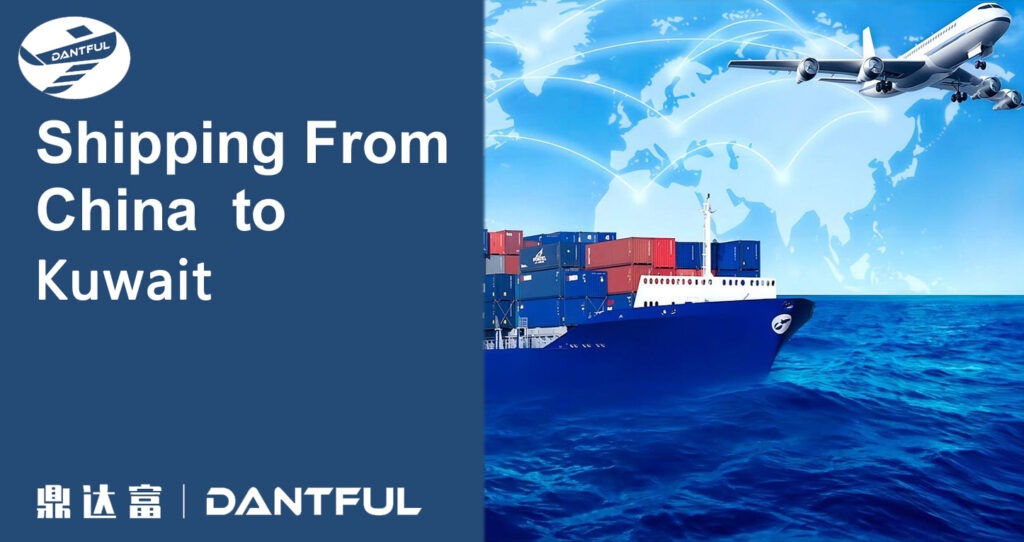
Introduction to Sea Freight from China to Kuwait
Sea freight plays a critical role in facilitating international trade, particularly between China and Kuwait. As two countries engaged in a robust trade relationship, understanding the dynamics of sea freight is essential for businesses looking to import goods effectively. The vast expanse of the Arabian Sea offers a strategic maritime route, making sea freight a preferred shipping method due to its cost-effectiveness and ability to handle large volumes of goods.
Importance of Sea Freight in China-Kuwait Trade
The trade relationship between China and Kuwait has seen remarkable growth in recent years, attributed to the increasing demand for a variety of products. China serves as a manufacturing powerhouse, exporting electronics, textiles, machinery, and more to Kuwait. Sea freight offers a reliable solution to transport these goods over long distances while maintaining affordability. With the growing trend toward globalization, leveraging sea freight ensures timely delivery while optimizing logistics costs.
Overview of Sea Freight Options and Benefits
When it comes to sea freight, businesses can choose from various options, including Full Container Load (FCL) and Less than Container Load (LCL). Each option provides distinct advantages tailored to diverse shipping needs. The primary benefits of using sea freight include:
- Cost Efficiency: Compared to air freight, sea freight is typically more economical, especially for larger shipments.
- Capacity: Shipping via sea allows for the transport of bulky items and larger quantities of goods.
- Reduced Environmental Impact: Sea freight generally has a lower carbon footprint than air transportation, aligning with growing sustainability goals among businesses.
Understanding these options equips importers with the knowledge needed to make informed decisions and streamline their supply chain processes.
Understanding Sea Freight Options
Less than Container Load (LCL) Shipping
Less than Container Load (LCL) shipping refers to the transportation of goods that do not fill a standard shipping container. Instead, multiple shipments from different customers are consolidated into a single container, maximizing space utilization.
Definition and Advantages of LCL
LCL shipping is ideal for businesses that require flexibility and may not have enough volume to warrant an entire container. Among the advantages of LCL are:
- Cost Savings: Importers pay only for the space they occupy in the container, making it a budget-friendly option for smaller shipments.
- Lower Minimum Order Requirements: Companies can import smaller quantities, allowing for better inventory management.
- Faster Inventory Turnover: By shipping smaller loads more frequently, businesses can respond quickly to market demand.
Ideal Use Cases for LCL
LCL is especially beneficial for small to medium-sized enterprises or those testing new markets. For example:
- Startups looking to introduce new products without committing to large shipments.
- E-commerce businesses needing to replenish stock periodically without incurring high shipping costs.
- Companies importing niche products that do not require large quantities.
Full Container Load (FCL) Shipping
Full Container Load (FCL) shipping involves the use of an entire container dedicated to a single shipper’s cargo. This method is advantageous for companies with substantial shipping needs.
Definition and Advantages of FCL
FCL shipping is characterized by its efficiency and speed. By booking an entire container, exporters can enjoy several benefits:
- Lower Shipping Rates per Unit: With larger shipments, the cost per unit decreases significantly, making FCL a cost-effective choice for high-volume shipping.
- Reduced Risk of Damage: Since the container is exclusively for one shipper’s goods, there is less handling and a lower likelihood of damage.
- Faster Transit Times: FCL shipments are generally prioritized over LCL shipments, allowing for quicker delivery times.
Ideal Use Cases for FCL
FCL is particularly suitable for businesses with consistent and high-volume shipping requirements. For instance:
- Manufacturers looking to regularly transport large quantities of raw materials or finished products.
- Companies engaged in seasonal promotions that require bulk shipments to meet sudden spikes in demand.
- Businesses exporting heavy machinery or oversized goods that necessitate the use of an entire container for safe transportation.
By evaluating the nuances of LCL and FCL shipping, companies can strategically choose the most appropriate method based on their logistical needs and financial considerations. When considering shipping options from China to Kuwait, Dantful International Logistics offers a highly professional, cost-effective, and high-quality one-stop international logistics service. For more specific inquiries on sea freight, customs clearance, or warehouse services, it’s advisable to connect with industry experts like Dantful to streamline your shipping process.
Shipping From China to Middle East Countries:
- Shipping from China to Saudi Arabia
- Shipping from China to UAE
- Shipping from china to KUWAIT
- Shipping From China To EGYPT
- Shipping from China to Bahrain
- Shipping From China To Jordan
- Shipping From China To Israel
- Shipping from China to Qatar
- Shipping From China To IRAQ
- Shipping from China to Iran
Comparing LCL and FCL Shipping Costs
When deciding between Less than Container Load (LCL) and Full Container Load (FCL) shipping, understanding the associated costs is vital for optimizing logistics budgets. Each shipping method has its unique cost factors that can significantly impact the total expenditure.
Cost Factors for LCL and FCL
The cost structure for LCL and FCL shipping varies due to several factors:
- Shipping Volume: LCL pricing is based on the volume or weight of the cargo, while FCL pricing is based on the entire container’s capacity.
- Handling Fees: LCL shipments may incur additional handling fees for loading and unloading multiple shipments within a single container, whereas FCL typically involves lower handling fees due to reduced processing.
- Freight Rates: FCL generally offers lower rates per unit as more goods are shipped compared to LCL, where costs are distributed across multiple shipments.
- Delivery Terms: Terms such as Incoterms (International Commercial Terms) can also influence cost, especially if additional services like insurance or customs clearance are required.
Average Rates for LCL and FCL from China to Kuwait
Understanding the average shipping rates can aid businesses in making informed decisions about their logistics strategies. The costs fluctuate based on market conditions, cargo specifications, and shipping routes. Below is a comparison table reflecting average rates for LCL and FCL from China to Kuwait.
| Shipping Method | Average Rate (USD per Cubic Meter) | Average Rate (USD per Container) | Ideal Shipment Size |
|---|---|---|---|
| LCL Shipping | $60 – $150 | N/A | Less than 15 CBM |
| FCL Shipping | N/A | $1,200 – $2,500 (20-foot container) | 15 CBM or more |
This table helps visualize the cost differences and identify which shipping method aligns better with specific shipping volumes and budget constraints.
Typical Transit Times for Sea Freight
Transit times are another crucial factor that influences the decision between LCL and FCL shipping. While both methods offer efficient transport options, there are differences in average transit times that businesses should consider.
Average Transit Times for LCL and FCL
Transit times can vary based on shipping routes, port congestion, and other logistical factors. The following table outlines the typical transit times for both LCL and FCL from China to Kuwait.
| Shipping Method | Average Transit Time (Days) | Comments |
|---|---|---|
| LCL Shipping | 25 – 40 | May involve additional handling time due to consolidating multiple shipments. |
| FCL Shipping | 20 – 30 | Typically faster due to direct routing and reduced handling. |
This comparison illustrates that while FCL may have a shorter transit time, businesses should weigh this against their shipping volumes and budget objectives.
Factors Affecting Transit Times
Several factors can impact the transit times for both LCL and FCL shipping:
- Port Congestion: Busy ports can lead to delays, affecting the overall shipping timeline.
- Route Efficiency: The chosen shipping route’s efficiency can vary based on geopolitical conditions or weather patterns.
- Customs Clearance: Speed and efficiency in customs processing can significantly influence delivery times, particularly for LCL shipments, which may undergo more thorough inspections.
- Seasonal Demand: During peak shipping seasons, such as holidays, transit times may increase due to higher shipment volumes and port congestion.
When considering shipping options from China to Kuwait, evaluating both costs and transit times is essential. Working with a reputable freight forwarder like Dantful International Logistics can streamline your logistics processes, ensuring that your goods arrive on time and within budget. For tailored shipping solutions, including customs clearance and warehouse services, consult Dantful’s professional team to optimize your international logistics strategy.
Major Chinese Ports for Exports to Kuwait
The effectiveness of sea freight from China to Kuwait largely depends on the choice of port of departure. Various ports in China are strategically positioned to facilitate smooth logistics operations, each offering unique advantages for exporters.
Key Ports in China for Sea Freight to Kuwait
Several major ports in China serve as critical hubs for exporting goods to Kuwait. The most notable among them include:
- Shanghai Port
- Shenzhen Port
- Ningbo-Zhoushan Port
- Guangzhou Port
- Tianjin Port
Advantages of Each Port
1. Shanghai Port
- Busiest Port: As the largest container port in the world, Shanghai boasts a vast network of shipping routes and high handling capacity.
- Advanced Infrastructure: Equipped with state-of-the-art facilities, Shanghai offers efficient customs clearance and cargo handling.
- Global Connectivity: Provides connections to numerous international markets, making it an ideal choice for businesses targeting various regions beyond Kuwait.
2. Shenzhen Port
- Proximity to Manufacturing Centers: Located near one of the largest manufacturing bases in China, Shenzhen allows for quick turnaround times from production to shipping.
- Comprehensive Services: Offers diverse shipping options, including LCL and FCL, catering to varied logistics needs.
- High Efficiency: Notable for fast processing times, minimizing delays in the shipping schedule.
3. Ningbo-Zhoushan Port
- Strategic Location: Positioned along the eastern coast, it serves as a key gateway for shipments to the Middle East, including Kuwait.
- Large Capacity: Capable of handling large volumes, making it suitable for both bulk and containerized shipments.
- Cost-Effective: Generally lower shipping costs compared to other major ports due to competitive rates.
4. Guangzhou Port
- Diverse Export Range: Handles a wide variety of products, from electronics to textiles, making it a versatile export hub.
- Enhanced Connectivity: Links to other major trade routes, facilitating smoother logistics operations for shipments to Kuwait.
- Modern Facilities: Equipped with advanced logistics infrastructure to ensure efficient cargo handling.
5. Tianjin Port
- Access to Northern China: Serves as a primary port for exporters in the northern regions, providing a vital gateway for shipping to Kuwait.
- Comprehensive Logistics Services: Offers a robust range of services, including warehousing and customs clearance.
- Growing Capacity: Continuous development and expansion efforts enhance its capabilities for handling increasing shipping volumes.
Kuwait Ports for Receiving Sea Freight
Upon arrival in Kuwait, the shipment must be processed through specific ports designed to accommodate various types of cargo. Understanding these ports’ characteristics and infrastructure can aid businesses in optimizing their logistics.
Main Ports in Kuwait for Receiving Goods
Kuwait’s main ports for receiving sea freight include:
- Shuwaikh Port
- Shuaiba Port
- Mina Abdullah Port
Port Infrastructure and Handling Capabilities
1. Shuwaikh Port
- Primary Commercial Port: As Kuwait’s main port, Shuwaikh handles a significant portion of the country’s import activities.
- Extensive Facilities: Equipped with modern cargo handling facilities, including container terminals and bulk handling systems.
- Efficient Customs Operations: Streamlined customs procedures help minimize delays and facilitate rapid cargo clearance.
2. Shuaiba Port
- Industrial Port: Primarily focused on handling bulk goods and industrial cargo, making it essential for companies involved in manufacturing and construction.
- Robust Infrastructure: Features deep-water berths and specialized handling equipment for various types of cargo.
- Logistics Support: Offers comprehensive services, including warehousing and distribution, to streamline operations for incoming shipments.
3. Mina Abdullah Port
- Strategic Location: Positioned to serve southern Kuwait, it plays a critical role in supporting regional trade activities.
- Multi-Purpose Facilities: Capable of handling both containerized and bulk shipments, providing flexibility for different types of goods.
- Modern Equipment: Utilizes advanced cargo handling technologies to ensure efficient processing of incoming freight.
By selecting the appropriate ports for both departure and arrival, businesses can optimize their shipping routes and enhance operational efficiency. Dantful International Logistics provides expert guidance on navigating these ports effectively while offering services that encompass customs clearance, warehouse management, and tailored logistics solutions for seamless international trade.
Preparing Your Shipment for Sea Freight
Preparing your shipment for sea freight is a crucial step that can significantly impact the efficiency of the shipping process. Proper preparation ensures compliance with regulations, minimizes delays, and facilitates smooth transit.
Essential Documentation
Accurate and complete documentation is a fundamental aspect of shipping goods internationally. The key documents required for sea freight typically include:
-
Commercial Invoices: This document provides a detailed account of the transaction between the seller and the buyer. It must include item descriptions, quantities, prices, and payment terms, and it serves as a basis for customs declarations.
-
Packing Lists: A packing list details the contents of the shipment, including the dimensions and weight of each package. This document aids customs officials in assessing the shipment and is essential for the recipient to verify the received goods.
-
Bills of Lading (BOL): The bill of lading is a legal document issued by the carrier that serves as a receipt for the cargo. It outlines the details of the shipment, including the origin, destination, and terms of transportation. There are different types of bills of lading, such as straight and negotiable, depending on how ownership of the goods is transferred.
Packaging and Labeling
Effective packaging and labeling are essential to protect goods during transit and facilitate customs clearance.
Packaging Guidelines for Sea Freight
-
Durable Materials: Use strong and durable materials to withstand the rigors of sea transport. Corrugated boxes, wooden crates, and metal containers are commonly used.
-
Moisture Protection: Ensure that packaging is waterproof or moisture-resistant, as humidity can affect goods during transit.
-
Secure Handling: Package items securely to prevent movement and damage during shipping. Fragile items should be cushioned with packing peanuts, bubble wrap, or foam.
-
Weight Limitations: Adhere to weight restrictions for containers and pallets to avoid additional charges and ensure safe handling.
Proper Labeling for Customs Clearance
-
Clear Identification: Each package should be clearly labeled with the contents, destination address, and any specific handling instructions (e.g., “Fragile” or “This Side Up”).
-
Customs Information: Include any necessary customs information or codes to expedite the clearance process. This may include HS codes (Harmonized System codes) that classify products for tariff purposes.
-
Contact Information: Ensure that the sender’s and receiver’s contact information is legible and includes phone numbers and email addresses.
Navigating Customs Clearance
Navigating customs clearance is a vital process that can significantly affect the efficiency of your shipment. Understanding customs procedures in both China and Kuwait will facilitate smoother transitions during the shipping process.
Understanding Customs Procedures in China and Kuwait
-
China Customs Procedures: Before exporting goods, it is essential to comply with Chinese export regulations. This includes obtaining export permits, ensuring accurate documentation, and adhering to any export restrictions on certain goods.
-
Kuwait Customs Procedures: Upon arrival in Kuwait, all shipments must undergo customs inspection. Customs officials will verify the documentation and may assess duties and taxes based on the shipment value. It is important to be aware of the regulations governing specific goods, as some may require additional permits or certificates.
Tips for Smooth Customs Clearance
-
Complete and Accurate Documentation: Ensure all paperwork is complete and accurate, as discrepancies can lead to delays or penalties.
-
Engage a Customs Broker: Utilizing a customs broker can simplify the clearance process. They have expertise in navigating customs regulations and can assist with documentation and compliance.
-
Pre-Advice: Provide customs authorities with advance notice of your shipment and its contents to expedite clearance.
-
Understand Tariffs and Duties: Familiarize yourself with the applicable tariffs and duties to avoid unexpected costs.
Choosing the Right Sea Freight Forwarder
Selecting the right freight forwarder is crucial for successful shipping operations. A reliable freight forwarder can streamline the logistics process and provide invaluable support throughout your sea freight journey.
Qualities of a Reliable Freight Forwarder
-
Experience and Expertise: A reputable forwarder should have extensive experience in international shipping and a deep understanding of logistics and customs procedures.
-
Strong Network: The forwarder should have established relationships with shipping lines, customs authorities, and port operators to facilitate smooth operations.
-
Comprehensive Services: A reliable forwarder should offer a full range of services, including customs clearance, insurance, warehouse services, and door-to-door shipping.
-
Transparent Communication: Effective communication is essential. Choose a forwarder who provides clear updates on the shipment status and addresses any concerns promptly.
Questions to Ask When Selecting a Forwarder
- What experience do you have with shipping to Kuwait?
- Can you provide references or testimonials from previous clients?
- What services do you offer beyond standard freight forwarding?
- How do you handle customs clearance and documentation?
- What are your pricing structures, and are there any hidden fees?
Why Choose Dantful Logistics
Dantful International Logistics stands out as a highly professional, cost-effective, and high-quality one-stop international logistics service provider for global traders. Key reasons to choose Dantful include:
-
Expertise in Freight Forwarding: With years of experience in the industry, Dantful is well-versed in navigating complex logistics requirements for international shipping.
-
Comprehensive Solutions: Dantful offers a wide array of services tailored to meet various logistics needs, including customs clearance, warehouse services, and door-to-door shipping.
-
Transparent Pricing: Clear and competitive pricing structures ensure businesses can budget effectively without the worry of hidden costs.
-
Customer-Centric Approach: Dantful is committed to providing exceptional customer service, ensuring that your shipping needs are met with efficiency and professionalism.
By choosing Dantful International Logistics, businesses can rest assured that their shipments are in capable hands, leading to successful and timely deliveries from China to Kuwait and beyond. For inquiries about services or to get a quote, consult Dantful’s expert team today.
Dantful International Logistics Services:
- Dantful Ocean Freight Services
- Air Freight From China
- Amazon FBA Freight Forwarding
- WAREHOUSE Services
- One-Stop Customs Clearance Solution
- Cargo Insurance Services in China
- DDP Shipping Services By Dantful Logistics
- Out of Gauge Cargo Transportation Shipping Services

Young Chiu is a seasoned logistics expert with over 15 years of experience in international freight forwarding and supply chain management. As CEO of Dantful International Logistics, Young is dedicated to providing valuable insights and practical advice to businesses navigating the complexities of global shipping.








